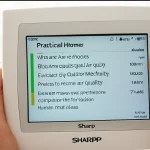Essential Smart Home Devices for UK Living Spaces
Choosing the right smart home devices UK depends on your home’s needs and compatibility with UK-specific standards. Essential devices include smart lights, thermostats, security cameras, and smart plugs—each serving distinct functions that enhance convenience, security, and energy efficiency.
For example, smart thermostats like the Nest Learning Thermostat or Hive Active Heating comply with UK heating systems and allow remote temperature control, leading to significant energy savings. Smart lights compatible with UK voltage and fittings provide flexible ambiance control and can be scheduled for daily routines.
Also to read : How Does Choosing the Right Home Décor Reflect Your Personal Style?
Security cameras tailored for UK homes often feature night vision and motion detection, improving property security. Popular brands such as Ring, Arlo, and Yale offer models designed to meet UK electrical and wireless standards, ensuring seamless integration.
Smart plugs enable control over traditional appliances via mobile apps or voice commands, compatible with UK power outlets. When selecting devices, prioritize compatible smart devices that support UK frequencies and protocols like Zigbee or Z-Wave to ensure interoperability within your existing UK home technology ecosystem. This approach ensures reliable performance and maximizes the benefits of a smart UK household.
Topic to read : What are effective ways to improve air quality in UK homes?
Integrating Smart Devices Seamlessly
Integrating smart home devices UK involves creating a unified system that allows effortless control across your home. Central to this is a smart hub UK, which acts as a command centre for your compatible smart devices. Popular hubs like Amazon Echo, Google Nest Hub, and Samsung SmartThings support multiple protocols such as Zigbee and Z-Wave, ensuring smooth interoperability with UK home technology.
Homeowners often ask: How do I link different brand devices into one system? The answer lies in choosing devices that support common standards and using hubs or apps that aggregate control. For example, a smart hub UK can connect your smart lights, thermostats, and security cameras, allowing you to manage them via voice assistants or single control panels.
Additionally, popular ecosystems in the UK include Amazon Alexa, Google Home, and Apple HomeKit. These platforms enable home automation, from setting routines to managing devices remotely. With proper integration, smart devices not only operate independently but communicate and respond intelligently, enhancing functionality and user convenience while maintaining compatibility within your UK home technology setup.
Installation, Setup, and Troubleshooting
Smart home installation UK typically begins with selecting compatible smart devices that support your existing UK home technology. For beginners, setup guides emphasize a step-by-step process starting from unboxing, connecting devices to power, to pairing with your smart hub UK or mobile app.
Pairing is often done via Wi-Fi, Zigbee, or Z-Wave protocols widely used in the UK. For example, smart lights require you to power them on, enable pairing mode, and then add them through your smart hub UK app or voice assistant. Similarly, smart thermostats often need wiring into your heating system, followed by calibration via the app to match your heating zones and schedules.
Troubleshooting smart tech often involves checking connectivity issues. Common problems include devices not appearing in the app, which can be resolved by restarting the device, resetting network settings, or updating firmware. Interference from other wireless devices or incorrect network settings can also disrupt smart home installation UK.
Upgrading legacy devices to smart versions may require additional equipment like smart plugs or adapters that are compatible smart devices themselves. Always consult the device manual or manufacturer’s setup guides for specifics tailored to UK standards, ensuring smooth integration into your home automation system.
Enhancing Convenience and Security with Automation
Smart home automation UK takes convenience to the next level by enabling routines that control lights, heating, and appliances without manual intervention. Automating daily schedules lets you program your compatible smart devices to switch on or off at set times, adapting to your lifestyle effortlessly. For example, you can schedule smart lights to dim in the evening or have your thermostat lower the temperature during work hours to save energy.
When it comes to security, automation adds significant value. Smart security systems can automatically arm when you leave home and send alerts on motion detection, supported by devices designed for UK home technology standards. Integration of door sensors, smart cameras, and alarms allows for comprehensive real-time monitoring, enhancing property safety.
Practical applications include using geofencing, where your smart hub UK senses when you leave or approach your home to trigger actions like unlocking doors or activating security cameras. Additionally, voice commands through popular platforms make activating security or convenience features seamless and quick. Embracing smart home automation UK not only improves daily convenience but also strengthens home security, blending technology effectively into modern UK living spaces.
Cost Considerations and Budget-Friendly Options
Balancing quality and affordability is crucial when selecting smart home devices UK. Prices vary significantly, with smart plugs and bulbs often available for under £20, while advanced thermostats or security cameras can cost upwards of £150. Understanding smart tech costs UK helps homeowners invest wisely without overspending.
For those seeking budget-friendly options, brands like TP-Link and Amazon Basics offer competitively priced compatible smart devices suitable for most UK homes. These products maintain essential features and comply with UK home technology standards, ensuring reliable performance and integration.
It’s important to consider long-term savings that smart technology can deliver. Automated heating control can reduce energy bills, offsetting initial purchase costs over time. Similarly, programmable lighting enhances energy efficiency, adding value beyond the upfront price.
When comparing prices, factor in device compatibility to avoid hidden costs from additional hubs or adapters. Opting for multi-functional devices can also reduce overall expenses. Ultimately, thorough price comparison combined with understanding your home’s automation needs ensures effective investment in smart home devices UK that balance cost and functionality.
UK Regulations, Standards, and Data Privacy
Smart home devices UK must adhere to strict UK smart home regulations ensuring safety, compatibility, and privacy. Compliance with British standards like BS EN 60669 for switches or electrical installation regulations (BS 7671) is crucial for all compatible smart devices to avoid hazards and legal issues. Devices must be tested and certified to meet these benchmarks before they enter UK homes.
Regarding device standards, wireless smart tech typically uses frequency bands and protocols approved by the UK’s communications authorities. This guarantees minimal interference with other devices and adherence to security protocols that protect data transmission.
Data privacy UK laws, including the UK GDPR, require manufacturers and homeowners to handle personal information responsibly. Smart home systems collect usage patterns, location data, and sometimes video feeds, highlighting the importance of secure network configurations and regularly updated firmware to prevent breaches.
Homeowners should prioritise devices that offer encrypted communications and transparent privacy policies. Understanding these regulations and standards is essential to maintaining a safe, legal, and secure smart home environment in line with UK home technology expectations. This approach balances innovation with robust protection for users.







